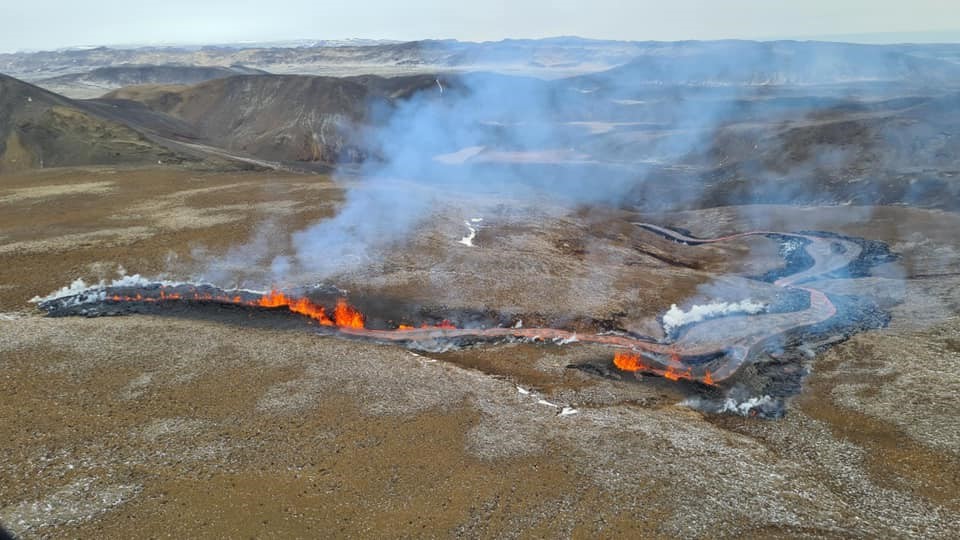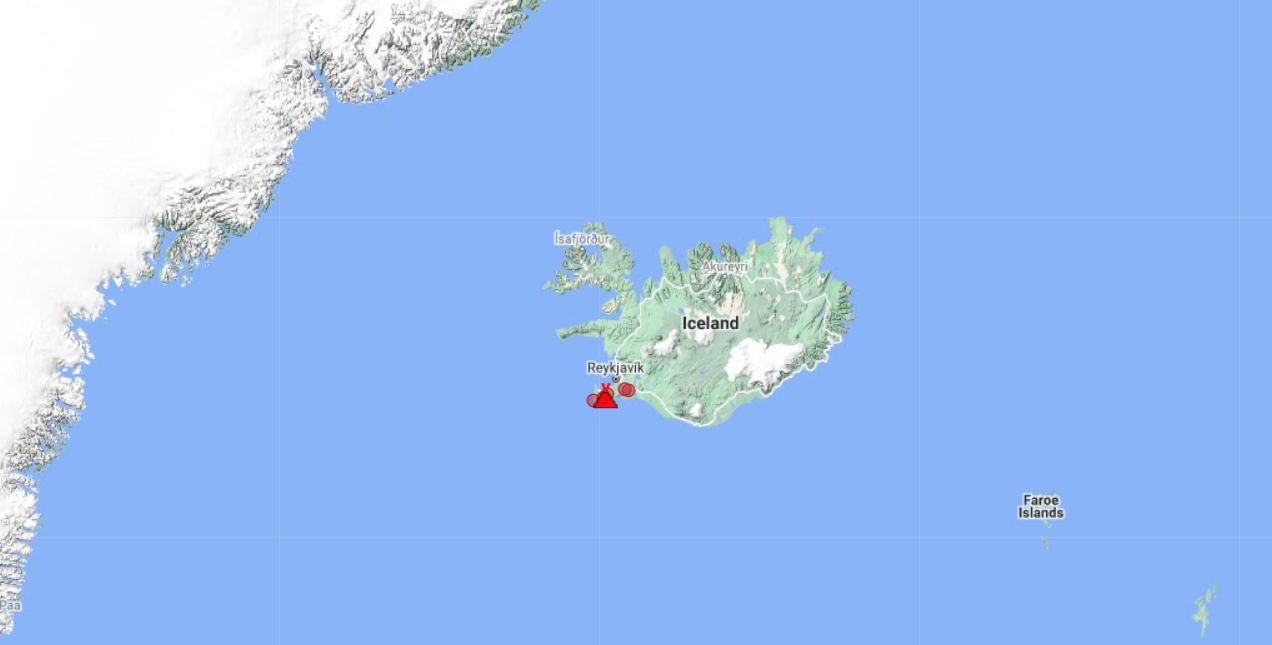O OVGA é um Centro de Ciência que desenvolve atividade de investigação aplicada e de divulgação científica na área da Vulcanologia, da Sismologia e da Geotermia.
Notícia -A A +A
Reykjanes Peninsula: Activity updates New eruptive fissure opens 1 km northeast of current eruption site-Notícia OVGA 06-03-2021

The new eruptive fissure that opened yesterday (05-04-2021) in Iceland (image: Almannavarnir / facebook)
A new eruptive fissure opened today approx. 1 km northeast of the so-far active eruption site. The seismic network detected at 11:37 local time a sharp peak in tremor at 1 km depth, which announced its formation shortly after as magma broke through the surface along a new section further upslope on top of the active magma intrusion underneath.
According to the Icelandic Met Office (IMO), the new eruptive fissure is about 500 m long. It actually seems to consist of two close-by fractures, a larger and a smaller one, both erupting small lava fountains and feeding a new lava flow towards the east.
A few spatter cones have already been forming from lava fountaining along the fissure. Fortunately, the main RÚV webcamera zoomed on the beginning of the event at the right time as can be seen in the video below.
According to the University of Iceland, the new lava flow continues at extremely high discharge rate as a viscosity of the flow is about 10^2 Pa. The lava flow has been traveling east and continues to fill up the Meradalir valley, adjacent to Geldingadalir valley (the site of the previous phase of activity) and is about to pool into a new lava flow field.
What caused the opening of the new fissure?
There are two possibilities:
a) The rising magma flux that continues to feed the ongoing eruption was about to be blocked and likely found a new weak spot.
b) The dike was slowly closing as the magma inside was cooling and this squeezed out the remaining liquid.
The immediate area was evacuated. There was no imminent danger to life due to the site's distance form the known hiking paths.
The Aviation Color Code remains at Orange.
The ongoing eruption in Geldingadalir shows no signs of weakening and the activity has been building a slowly growing cone around the two active vents in the center.
FONTE: volcanodiscovery.com
ADENDA OVGA:

Localização Geográfica do vulcão Fagradalsfjall (Islândia)
